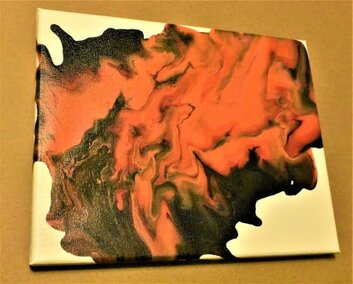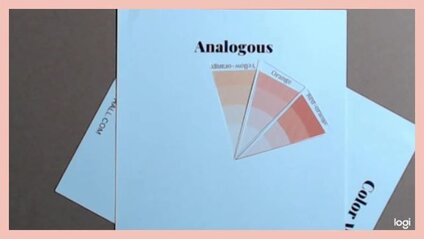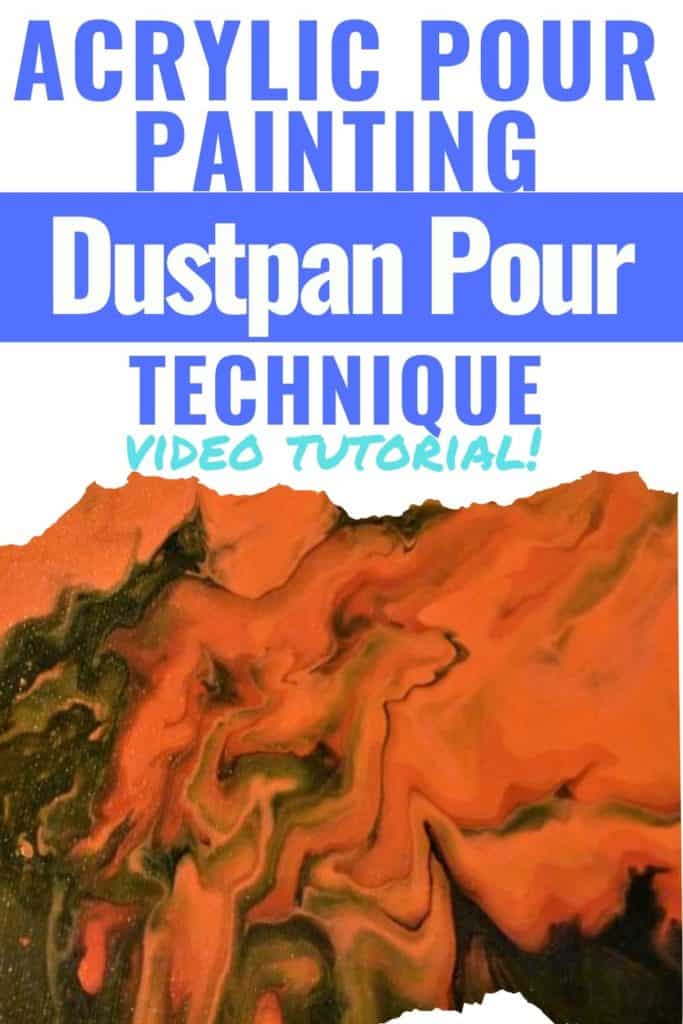With its organic edges, the dustpan pour technique from Day 9 of my acrylic pouring color theory series is a great way to to play with shape and line in your art.

If you’re curious about colors and color theory as it relates to acrylic pouring, head on over to my post about Choosing Colors for Acrylic Pouring and grab your FREE printable Color Wheel and Color Scheme Guides.
If you would like to follow along with my 30-day acrylic pouring color theory video series, grab your very own color wheel and color scheme guides and some paint, and head on over to the color theory section of Homebody Hall!
If you’re pouring for the first time and would like more explanation on materials, processes, and terms, you can head on over to my Beginner’s Guide to Acrylic Pouring. You can also head over to my Comprehensive Guide to Acrylic Pouring Techniques for more information on all of the different techniques and my How to Thin Acrylic Paint for Acrylic Pouring post to learn all about pouring mediums!
This post contains affiliate links, which I earn a small comission from. These are provided for your convenience, and the price isn’t increased at all.
Color of the Day (Day 9 – Dustpan Pour):
- Orange
Color Scheme:
- Analogous – Orange, Yellow-orange, Red-orange

Shades Chosen:
- Orange
- Light-orange
- Yellow-orange
- Red-orange
Neutrals Chosen:
- Black
Technique:
- Dustpan pour
Paints:
All of the colors I used were mixed from the paint colors below. (Red and yellow for orange, orange and white for light orange, orange and yellow for yellow-orange, and red and orange for red-orange)
- Artist’s Loft Brilliant Yellow
- Artist’s Loft Deep Red
- Liquitex Basics Titanium White
- Master’s Touch Permanent Black
Pouring Medium:
- Floetrol
- Water
Canvas:
Tools:

Sealant
- Rustoleum American Accents Gloss Clear (1 thin coat)
Dustpan Pour Step by Step
- Start with a base coat on your canvas to aid your paint flow around the canvas. I didn’t on this one and I regret it.
- Layer your paint in the dustpan however you’d like. For this one, I used puddles. The order in which I layered my paint was: black, red-orange, orange, yellow-orange, light orange, black, red-orange, orange, yellow-orange, light orange, black.
- Slowly begin to tilt the dustpan to transfer the paint from the dustpan to the canvas. Moving the dustpan from side to side can produce som really cool line effects within the paint.
- Tilt the painting until you are happy with the way it looks.
Go Forth and Pour!
All right, now that you’ve got the scoop on the dustpan pour, head on out there and make some beautiful art!!
As always, check out my updates on Facebook and Instagram and feel free to peruse Homebody Hall for more fluid art tips, tricks, and tutorials! Also head over to Youtube and subscribe to get my videos sent to you as soon as they come out!!
2024 Color Palettes for Creating Updated Art
Let’s Throw a Paint Party: How to Host Your Own Paint and Sip
Do It Yourself Countertop Paint: Update Your Kitchen With Pour Paint
Want to remember this dustpan pour technique? Pin Day 9 of this Acrylic Pouring Color Theory Series to your favorite Pinterest Board!







